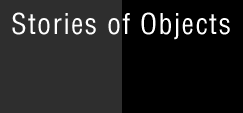


An exhibition produced by the AFAA,
Photographing the object
by Marc Guillaumot
  |
|
 |
|
|
This exhibition illustrates the different approaches
of industrial creation.
First of all, the original pieces : the "Lettera Amorosa", manifest-object by Sylvain Dubuisson, inspired by Rene Char's poem. The mirrors by Nestor Perkal, "specially made not to look at one's self". Also, small serial-made objects : the "S'il vous plait" stool by Marie-Christine Dorner, which transposes origami on metal; the "Divine" table by Kristian Gavoille, which gives a new look to the "archetypal" table through a subtle combination of shapes and materials; the "Le Compas dans l'Oeil" lamp by Andrée Putman, sober and elegant, a reminder of the beauty of the architectural object. Following, some remarkable objets of the luxury industry : Martin Szekely's "Reine de Saba" magnificent link necklace and Olivier Gagnère's "Lipari" cups, which renew with French decorative art; emerging from the imaginary world of Elizabeth Garouste and Mattia Bonetti, the "Deci-Delà" perfume bottles, covered with a pebble and wrapped by a stole. Objects belonging to the industrial production series are also featured. Pascal Mourgue's "Dune" chair, dressed up with anti-rust fabric "la batyline"; Jean Claude Neyton's pliers, with its adapted trigger, industrial object par excellence, also take up the challenge. The protection suit by Marc Sadler is conceived to save lives; Jean Michel Wilmotte's iron bin with its imposing materials participates to the mission of "creating a new urban life art". The "Oz" television set, one of the first objects conceived by Philippe Starck during his collaboration with a large electronic industrial group in 1995; its timeless refinement gives a unique personality to the standardised object. Matali Grasset's "Don O" radio, domestic object produced in collaboration with Philippe Starck "thanks to a technology that is both sensitive and conniving " An exception is the bottle, a popular narrative objet that glorifies the orange (Orangina). This bottle was not designed; it owes its existence to the intuition of company manager Jean-Claude Beton. Marc Guillamot translates the strength conveyed by this selection of objects with such different fates. |
|
List of designers in the exhibition Photographing the Object
|
||